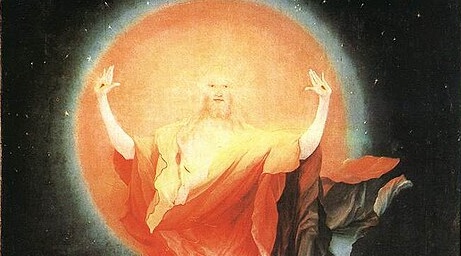In researching Fourth Way material related to the subject of transformation, I suddenly became aware of its obvious etymology: trans (across) form. When we refer to the process, though, we usually intend a greater significance: a change of state.
In general, transformation refers to a change in form, appearance, or nature, while transmutation implies a change that involves the transformation of one substance into another, often at a subatomic level. For example, transformation might be changing the shape of an iron bar into a sword, while transmutation would be changing the iron bar into a gold bar.
Transmutation, then, is the basis of the alchemists’ search.
Throughout our existence, we are aware of finer states when we feel lighter and less identified, more capable of penetrating the fog of illusion and imagination. When we join a school, our collective existence attracts higher forces, or higher energies. We also attract shocks intended for our evolution, both as a school and as individuals.
The first level of shock is that of becoming aware of ourselves, of momentarily penetrating the stupor of “waking sleep.” These moments can be extended and become more frequent. In such states, we separate our bodily selves from our awareness, and break out of what Shakespeare calls “a strange repose, to be asleep with eyes wide open, standing, speaking moving, and yet so fast asleep.”
We begin to create a part that observes, separate from the sense of ‘I.’
To strengthen our aim, though, another level of shock is necessary: transformation. Any person on a search for consciousness can expect to suffer. In fact, everybody suffers. Our aim is to respond differently, to use suffering to create an immortal astral body from the body of our physical existence, or as St Paul says. “when that which is mortal puts on the immortal.”
We can begin by transforming our response to minor irritations, by accepting them. We can even learn to be grateful for the opportunity that friction provides. Gratitude in the face of adversity elicits the finer energy of higher centers, of which our astral bodies are composed.
As the intensity or consistency of shocks increases, the proportions of physical and astral elements gradually change. We become less and less creatures of bodily energies, and more available to the energies of higher centers. In the Apochrapha, Christ was recorded to say, “You think I suffered on the cross, but I didn’t suffer.” This may have been referring not to the absence of pain, but to the non-identification with bodily functions and sensations.
A photograph of Helen Keller, who transformed a life of blindness and deafness into one of gratitude and intelligence, shows the radiance of almost complete transformation.

Light is the visible manifestation of higher energies in the world. Spiritual light is invisible, and infinite.
Ruth Atkins is one of the editors of https://fourthwaytoday.org, and a former educator. For another recent article by this author, see https://fourthwaytoday.org/author/ruth-atkins/
